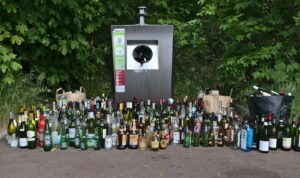Prince William’s Earthshot Prize: Who won?
Winners of Prince William’s environmental prize were announced over the weekend, with each project receiving £1m to help them develop further.
Launched in October 2020, the prince aims to have provided £50m to climate and nature solutions by 2050, as the race to solve the climate crisis continues.
The Earthshot Prize is modelled after President John F. Kennedy’s Moonshot challenge to find innovative ways to reach the moon.
‘I believe that the Earthshot solutions you have seen this evening prove we can overcome our planet’s greatest challenges,’ said Prince William as he presented the awards. ‘By supporting and scaling them we can change our future.’

Five projects took the prize money home, with the innovations covering a wide variety of environmental issues, including air quality and plastic pollution.
The winning project in the climate adaptation category was India-based Kheyti which offers portable, pop-up greenhouses to help farmers cope with turbulent weather.
Launched by 17-year-old Sathya Raghu Mokkapati in partnership with entrepreneur Kaushik Kappagantulu, the project can help to reduce costs, increase yields and provide stability for farmers.
The UK-winners were owners of start-up Notpla, which aims to combat plastic pollution through bioplastics made from seaweed, with takeaway boxes and edible liquid sachets made from the material so far. The plant grows quickly and absorbs CO2, helping to solve the climate crisis at the same time.
Charlot Magayi from Kenya, who has created cleaner stoves which can run on 60% less fuel and burn smokeless fuel, was commended for reducing toxic indoor air pollution by 90%.
Indigenous rangers in Australia were recognised at the awards too, as the female-led Indigenous Women of the Great Barrier Reef uses ancient, indigenous knowledge and digital technology to protect land and sea.
Oman-based 44.01 also won the prize for its innovative climate solution which permanently stores CO2 by injecting the gas into rocks underground. Here the gas transforms into a stable mineral, removing harmful emissions from the atmosphere.
Photo by NASA















